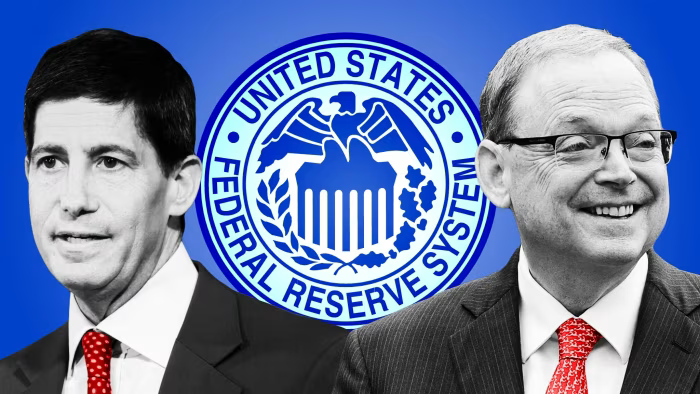WASHINGTON (Realist English). Donald Trump has confirmed that Kevin Hassett and Kevin Warsh are the leading candidates to succeed Federal Reserve Chair Jay Powell, whose term ends in May 2026. Speaking to reporters on Wednesday, Trump said he had begun interviews and was considering “probably three” finalists.
Asked whether Hassett and Warsh were the front-runners, Trump responded: “The two Kevins are absolutely … they’re both very good.”
The selection process unfolds amid Trump’s escalating criticism of Powell, whom he has called a “stubborn mule” and a “moron” for resisting interest rate cuts. Trump argues that borrowing costs should be slashed from their current 4.25–4.5% range to 1%, while Powell and several Fed officials insist that restrictive policy remains necessary to curb inflation — including risks from Trump’s own trade tariffs.
Kevin Hassett, a close Trump ally and director of the National Economic Council, and Kevin Warsh, a former Fed governor who lost the chairmanship to Powell in 2017, are both advocating for lower interest rates. Analysts say that stance is crucial to secure Trump’s endorsement.
“The odds are pretty high that it will be one of the two Kevins,” said Stephen Moore, an economist with ties to Trump. “Trump respects them both, and he likes them both.”
A third potential candidate, Christopher Waller, who joined the Fed Board during Trump’s first term, is also seen as a credible contender. But the sudden resignation of Fed Governor Adriana Kugler last week — months ahead of her scheduled January departure — has added complexity.
Trump said he may appoint a temporary successor to Kugler, who would serve until May 2026, before naming a “permanent” Fed chair to take over. That interim role could go to a less likely candidate such as former World Bank president David Malpass, observers suggested.
Fed board appointments require Senate confirmation. Warsh, Waller, and Malpass did not respond to requests for comment, and the White House declined to discuss Hassett’s candidacy.
According to Polymarket odds, “two Kevins and a Chris” are now seen as front-runners.
Among them, Warsh — a former Morgan Stanley executive and adviser to President George W. Bush — is widely viewed as the more orthodox pick by financial markets. In contrast, Hassett, a veteran of Republican campaigns and Trump’s former chair of the Council of Economic Advisers, is considered more likely to align with Trump’s push for dramatic rate cuts.
Despite Warsh’s recent media support for lower rates, investors recall his hawkish stance during the 2008 crisis. A transcript from a Fed meeting just after the collapse of Lehman Brothers shows he remained focused on inflation risks even as markets unraveled.
Now a fellow at the Hoover Institution, Warsh has tried to address those concerns by promising to reduce the Fed’s balance sheet — potentially creating room for rate cuts. But Trump, while praising him, also issued a caution: “Sometimes they’re all very good until you put them in there and then they don’t do so good.”
Trump’s decision could reshape U.S. monetary policy for years to come, particularly if his preferred candidate pushes through aggressive rate cuts. Markets will be closely watching for signs of loyalty, not just credentials — a hallmark of Trump’s staffing choices.
This contest isn’t just about monetary policy — it’s about who will serve as the executor of Trump’s economic vision in a second term. Hassett’s loyalty and campaign pedigree may outweigh Warsh’s technocratic credentials if Trump chooses to remake the Fed in his own image.

















